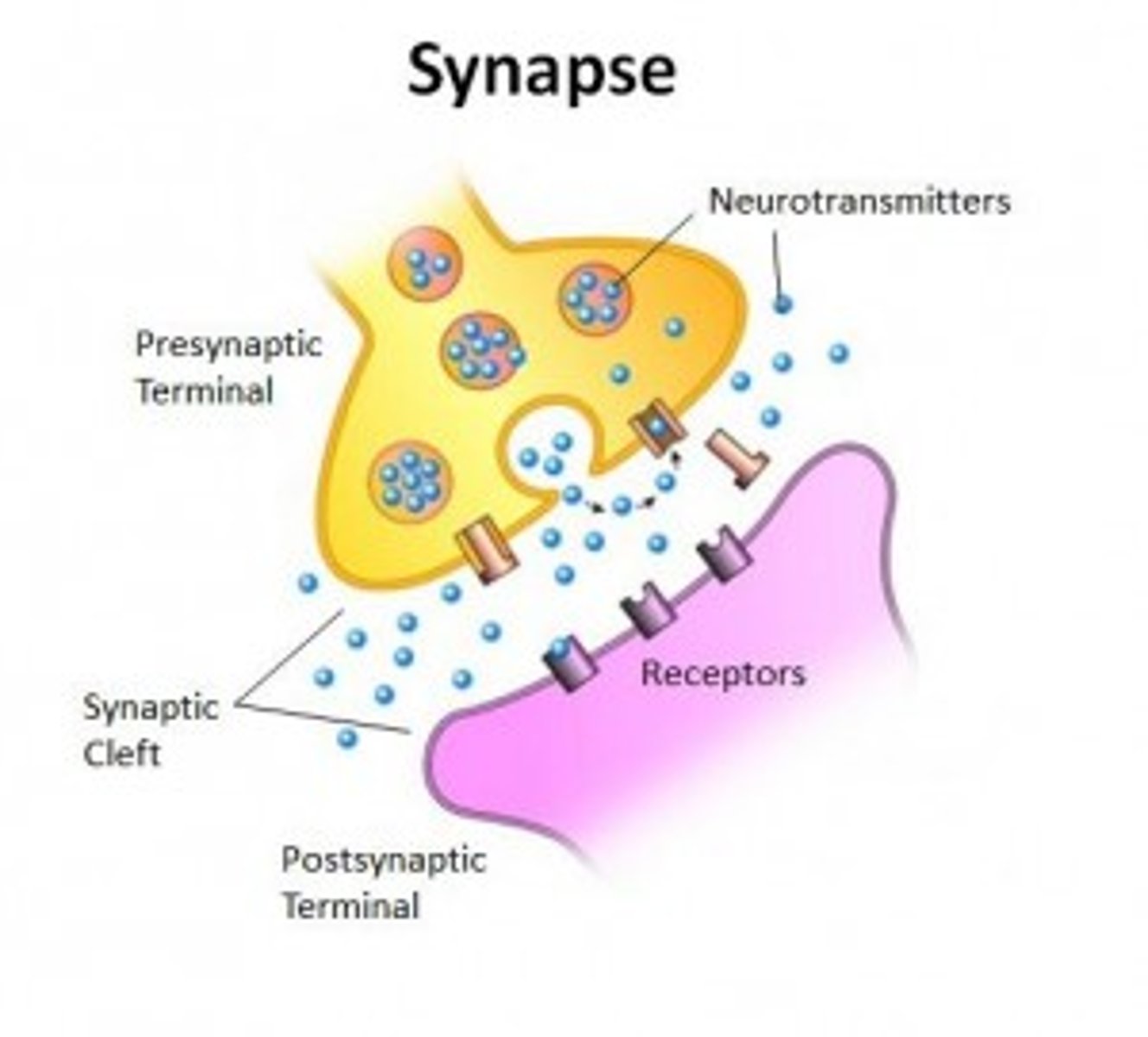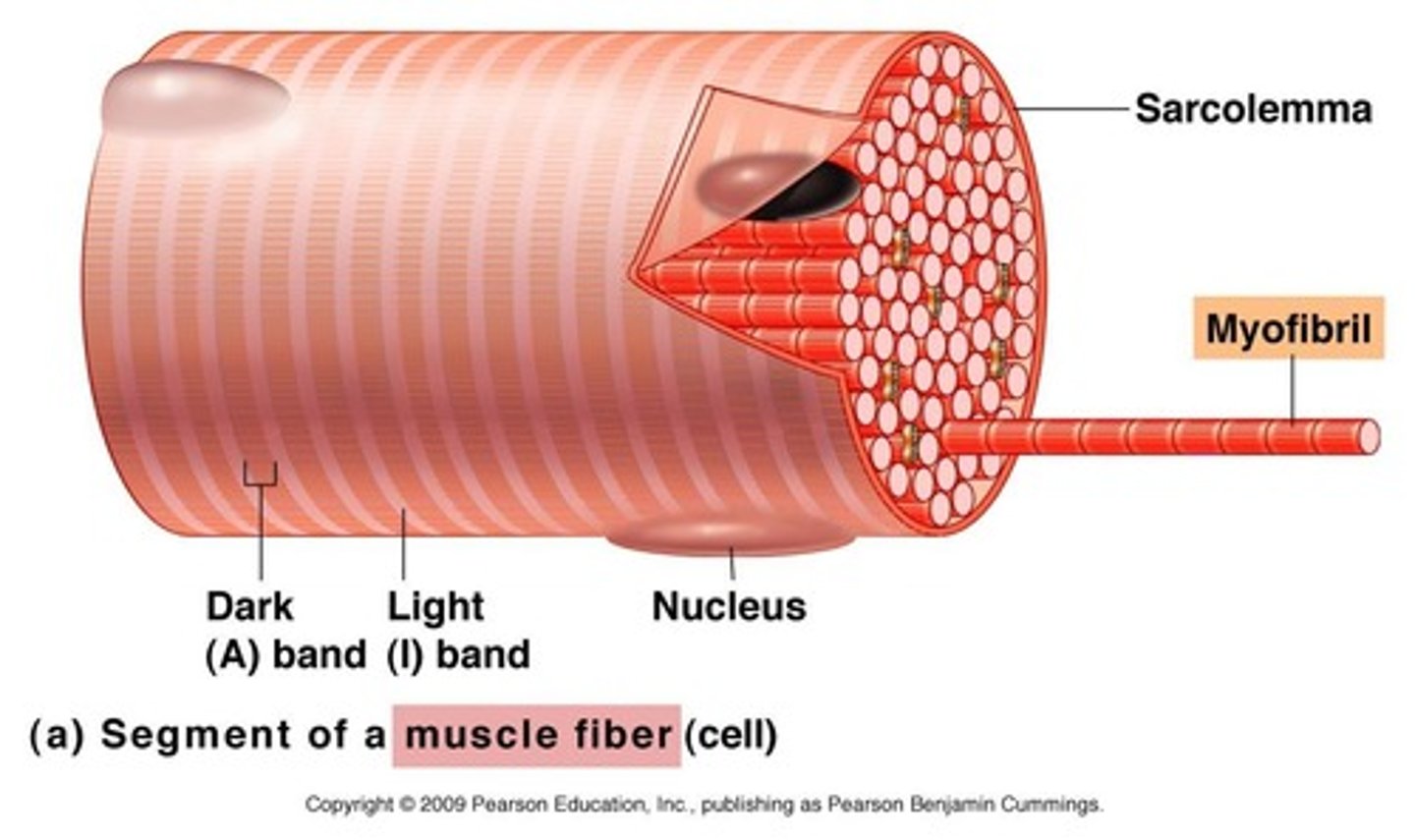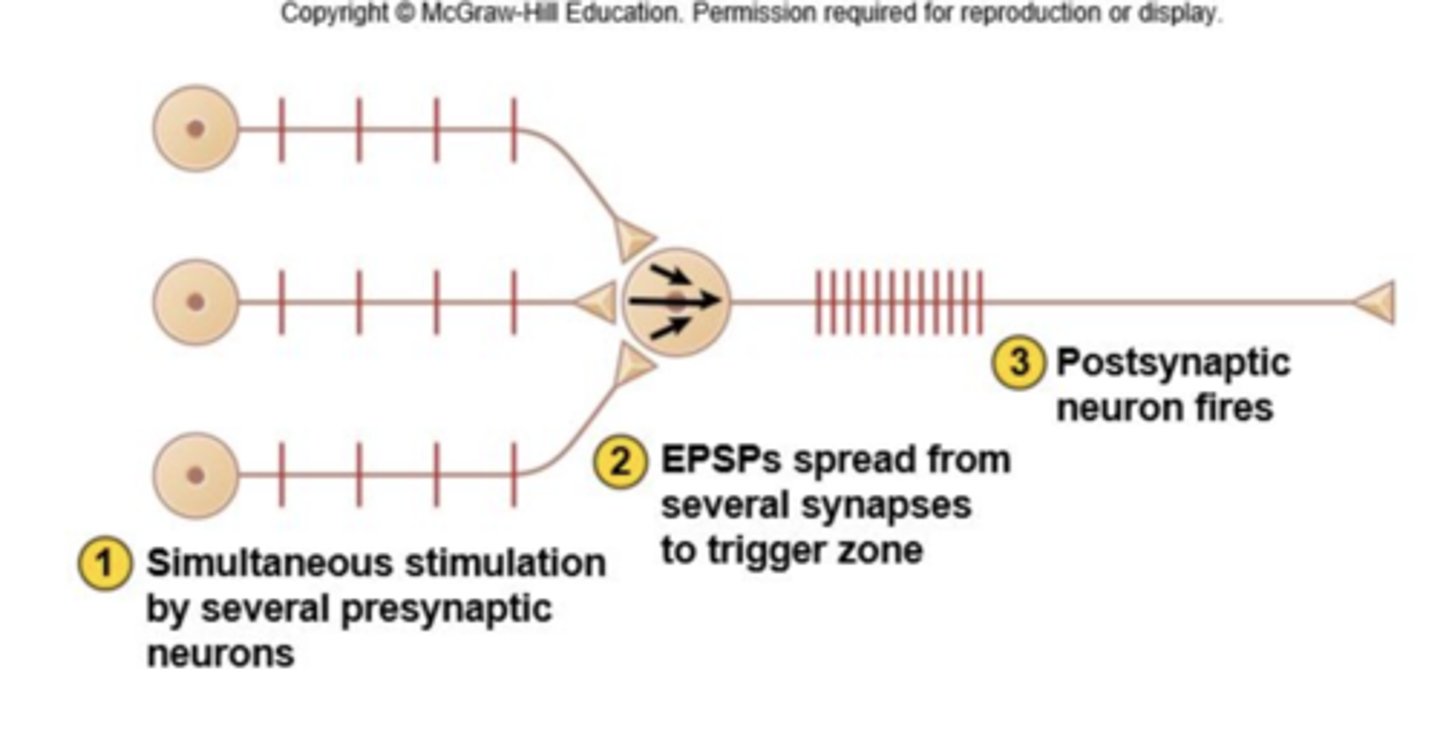Organisms response - Synapses, neurotransmitters and drugs
1/27
There's no tags or description
Looks like no tags are added yet.
Name | Mastery | Learn | Test | Matching | Spaced |
|---|
No study sessions yet.
28 Terms
Labelled synapse.

What is a synapse?
Gap between neurons
What is the synaptic cleft?
Gap between adjacent neurons
Action potential cannot move through the synaptic cleft so how are signals transmitted?
Using neurotransmitters
What are neurotransmitters?
Chemical messengers that cross the synaptic gaps between neurons
Where are neurotransmitters made?
In the pre-synaptic neurone
Where are neurotransmitters stored?
Synaptic vesicles
What are neuroreceptors?
Gated ion channels that have binding sites for specific neurotransmitters which open when they are bound to, allowing an ion to flow into the next neurone
What are cholinergic receptors?
A term referring to receptor sites that have acetylcholine as their primary neurotransmitter
Describe the stages of neurotransmission.
1. Action potential opens gated channels in presynaptic membrane
2. Vesicles in presynaptic membrane move to the edge and the neurotransmitters diffuse into the cleft
3. Neurotransmitters attach to neuroreceptors and the gated Na+/K+ channels open
4. Na+ ions diffuse in so action potential is created in post synaptic neurone
What is a neuromuscular junction?
Point of contact between a motor neuron and a skeletal muscle cell (NTK diagram - see booklet)
What is the sarcolemma?
Plasma membrane of a muscle cell

Describe the stages of neurotransmission at a neuromuscular junction.
1. Action potential opens gated channels in presynaptic membrane
2. Vesicles in presynaptic membrane move to the edge and the neurotransmitters diffuse into the cleft
3. Neurotransmitters attach to neuroreceptors and the gated Na+/K+ channels open on surface of muscle cell
4. Na+ ions diffuse into muscle cell so its membrane depolarises
5. This causes the sarcoplasmic reticulum to release Ca2+ ions
6. The muscle contracts
7. Any NTs left in cleft are hydrolysed, reabsorbed into presynaptic membrane and used to make more NTs
Why is it important that the NTs left in the cleft at a neuromuscular junction are hydrolysed?
Because they can overstimulate the muscles
What are the main differences between neuromuscular and cholinergic junctions?
NM:
- Only exitatory
- Links neurones to muscles
- Only motor neurones
- Action potential ends here
- Receptors for NTs are on muscle fibre
Chol:
- Inhibitory and excitatory
- Links neurones to other neurones or organs
- Any kind of neurone involved
- New action potential can be produced
- Receptors for NTs on post-synaptic membrane
What are agonist drugs?
Drugs that stimulate the nervous system by mimicking the action of NTs e.g. heroin
What are antagonist drugs?
Drugs that inhibit the nervous system by preventing the action of NTs
How does nicotine act in the nervous system?
It mimics the action of acetylcholine so Na+ channels open
How does atropine act in the nervous system?
Has the opposite action of acetylcholine so Na+ channels close
What is summation?
This term refers to the summing of all individual changes in a neuron's membrane potential
What are the two types of summation?
Temporal and spatial
What is spatial summation?
Where two+ action potentials arrive from different presynaptic neurones and add together or cancel out

Describe what happens when summation occurs with an excitatory and inhibitory neurone?
They cancel out so the threshold potential is not reached
Describe what happens when summation occurs with an excitatory and exitatory neurone?
The threshold potential is reached and the action potential continues
What is temporal summation?
Where 2+ action potentials arrive in RAPID succession along a single pre syneptic neurone so the threshold potential is reached and action potential is continued
(rapid essential to say)
What does the unidirectionality of neurones mean?
Travels from dendrites to synaptic knobs
- As vesicles of NTs are only present on the presynaptic knob so the NTs can only be released from here (one direction)
- Action potentials can only travel in on direction in the neurone because depolarisation occurs in front of the action potential (hyperpolarisation behind cannot be repolarised)
How does inhibition work?
An action potential can arrive that causes an NT to be released that prevents an action potential being made in the post synaptic membrane.
Describe the mechanism of inhibition.
1. The presynaptic neurone releases a type of neurotransmitter that binds to chloride ion protein channels on the postsynaptic neurone.
2. The neurotransmitter causes the chloride ion protein channels to open.
3. Chloride ions move into the postsynaptic neuron by facilitated diffusion.
4. The binding of the neurotransmitter causes the opening of nearby potassium protein channels.
5. Potassium ions move out of the postsynaptic neurone into the synapse.
6. The combined effect of negatively charged chloride ions moving in and positively charged potassium ions moving out is to make the inside of the postsynaptic membrane more negative and the outside more positive.
7. The membrane potential increases to as much as -80mV compared with the usual -65mV at resting potential.
8. This is called hyperpolarisation and makes it less likely that a new action potential will be created because a larger influx of sodium ions is needed to produce one.